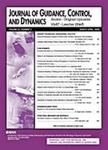版权所有:内蒙古大学图书馆 技术提供:维普资讯• 智图
内蒙古自治区呼和浩特市赛罕区大学西街235号 邮编: 010021

作者机构:Univ Florida Dept Mech & Aerosp Engn Gainesville FL 32611 USA Univ Florida Dept Math Gainesville FL 32611 USA
出 版 物:《JOURNAL OF GUIDANCE CONTROL AND DYNAMICS》 (制导、控制和动力学杂志)
年 卷 期:2019年第42卷第9期
页 面:2026-2041页
核心收录:
学科分类:12[管理学] 1201[管理学-管理科学与工程(可授管理学、工学学位)] 08[工学] 0804[工学-仪器科学与技术] 0825[工学-航空宇航科学与技术]
基 金:U.S. Office of Naval Research [N00014-15-1-2048] U.S. National Science Foundation [DMS-1522629, DMS-1819002, CMMI-1563225] Naval Air Warfare Center Weapons Division, China Lake, California [N68936-17-C-0011] U.S. Department of Defense Science, Mathematics and Research for Transformation (SMART) Scholarship for Service Program
主 题:Computational Methods Hamilton Jacobi Bellman Equation Nonlinear Programming Reusable Launch Vehicle Flight Path Angle Angle of Attack Bank Angle MATLAB Earth Powered Descent Guidance
摘 要:A method is described for computational optimal guidance and control using adaptive Gaussian quadrature collocation and sparse nonlinear programming. The method employs adaptive Legendre-Gauss-Radau (LGR) quadrature collocation using a mesh truncation and remapping procedure at the start of each guidance cycle, thereby retaining only the mesh points associated with the unexpired horizon. Using this approach, the starting mesh for a guidance cycle is smaller than the starting mesh used on the previous guidance cycle. The nonlinear programming problem is then solved on the reduced mesh corresponding to the unexpired horizon to generate the control that is used on the current guidance cycle. It is noted that the mesh points on the unexpired horizon are well placed for rapidly solving the LGR quadrature collocation approximation of the optimal control problem. The method developed in this paper is demonstrated on two challenging aerospace optimal control problems. For both examples, the dynamics are simulated on each guidance cycle using a perturbed dynamic model in the absence and presence of a computation time delay. The results of this study demonstrate that the method developed in this paper is viable as a computational method for optimal guidance and control.